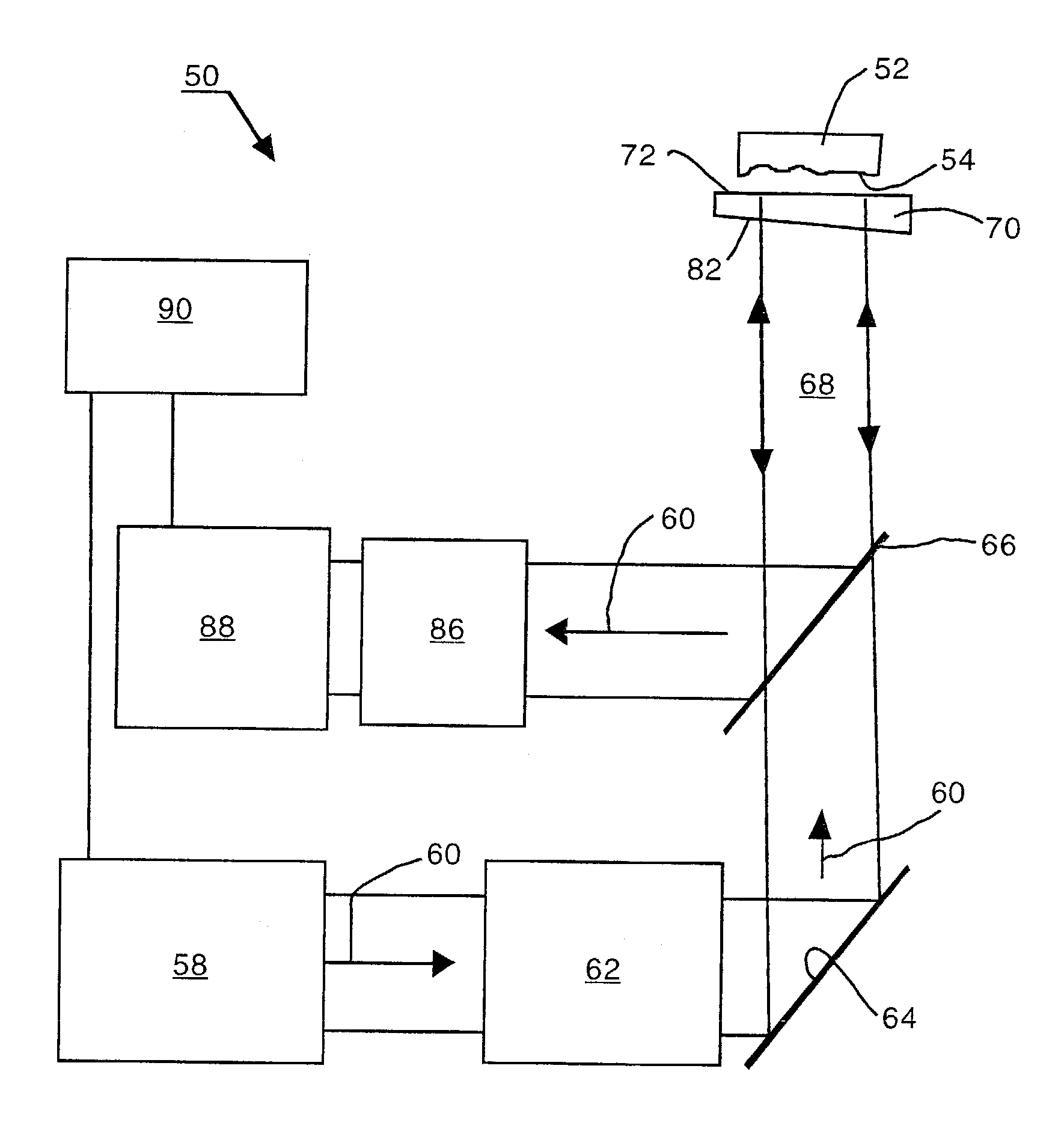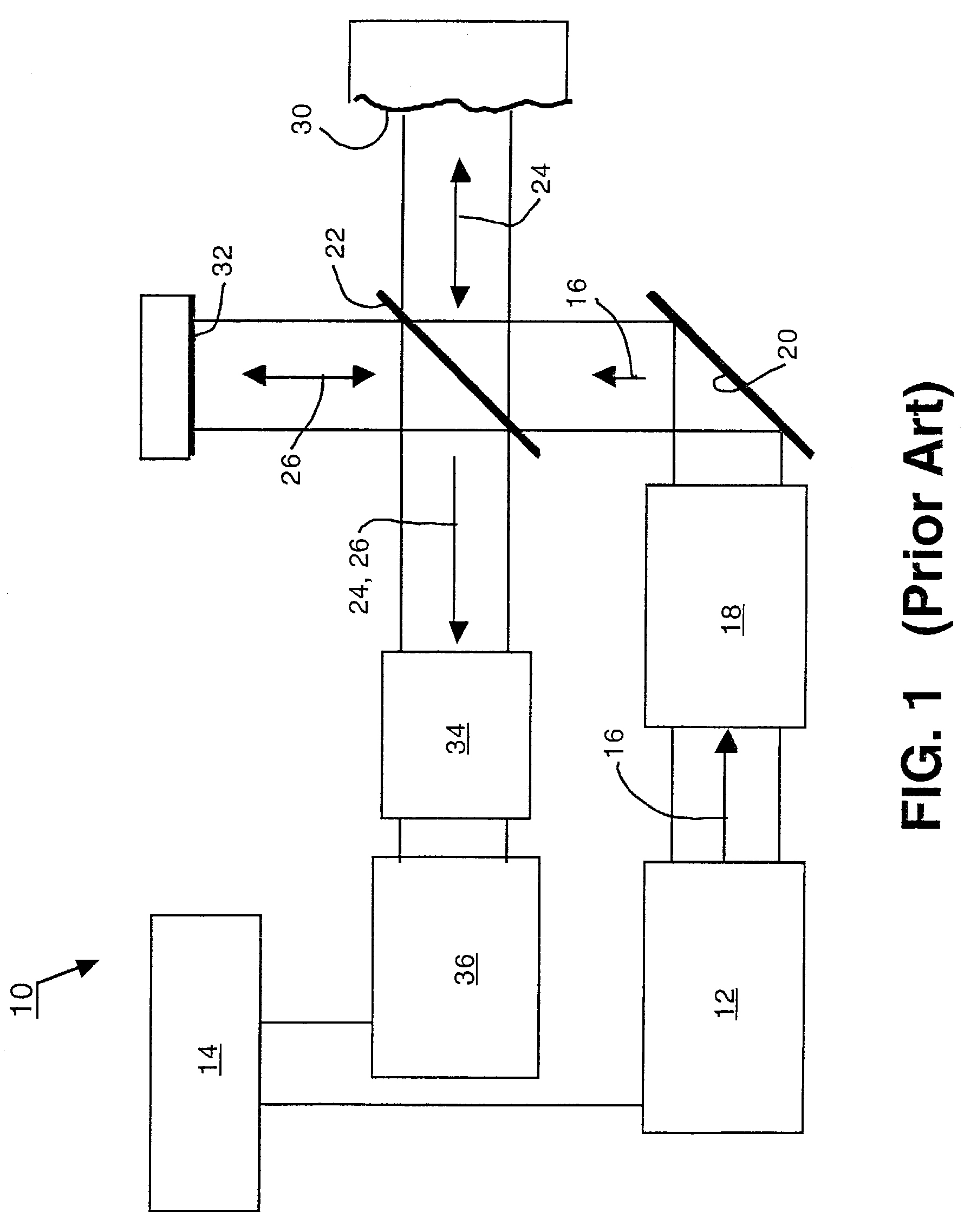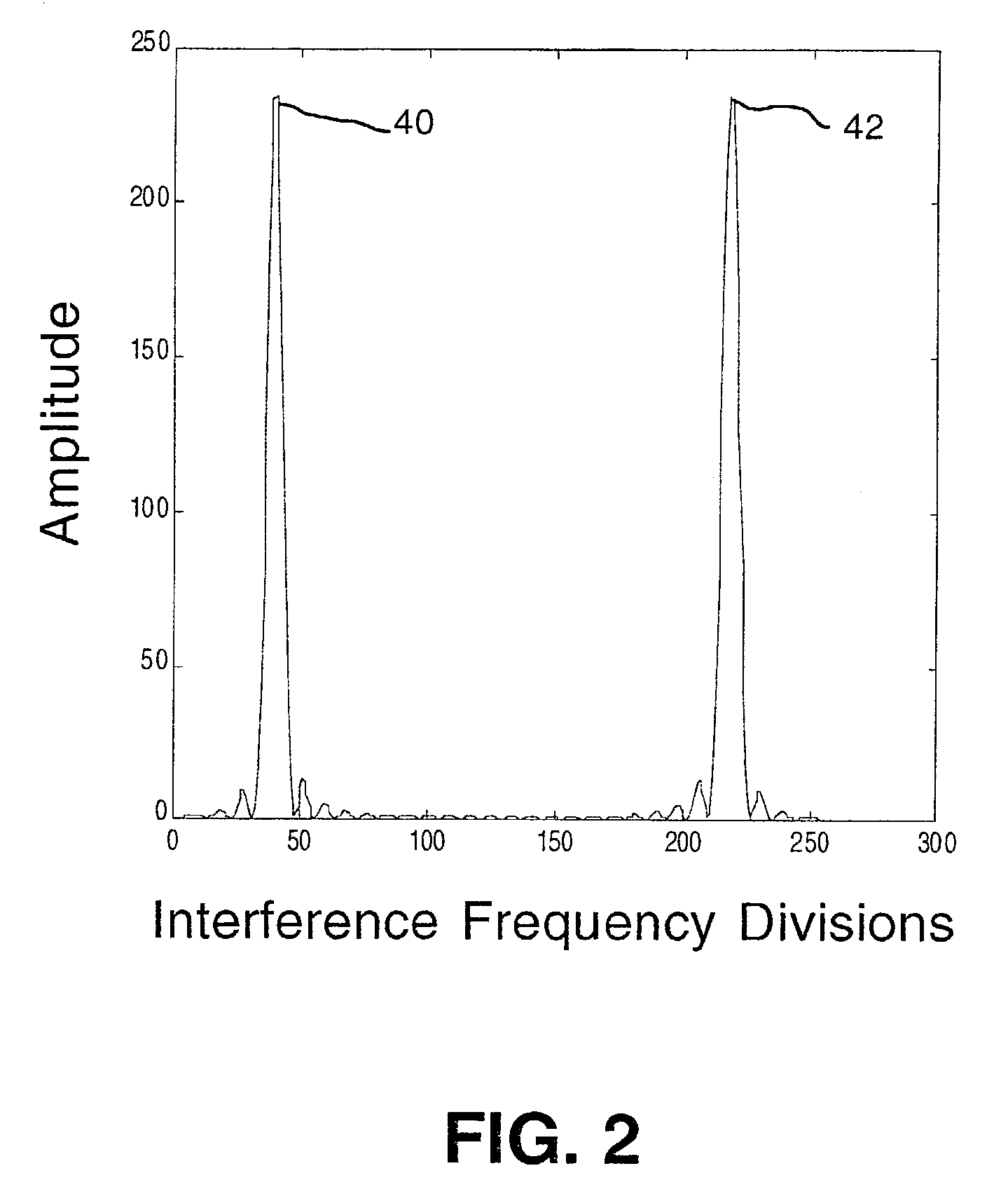Common-path frequency-scanning interferometer
a frequency-scanning interferometer and common-path technology, applied in the field of wavelengthscanning interferometry or multi-wavelength interferometry, can solve the problems of difficult adaptation to phase shifting, difficult to adapt to common-path frequency-scanning interferometers, and difficulty in reducing the sensitivity of environmental effects, so as to reduce the dispersion, minimize the influence of disturbance, and reduce the sensitivity to environmental effects
- Summary
- Abstract
- Description
- Claims
- Application Information
AI Technical Summary
Benefits of technology
Problems solved by technology
Method used
Image
Examples
Embodiment Construction
[0064]As shown in FIG. 3, an exemplary frequency-scanning interferometer 50 is arranged in accordance with the invention as a common-path (e.g., Fizeau) interferometer for measuring topographical features of a test object 52. A radiation source 58 produces a measuring beam 60 for acquiring information about a test surface 54 on the test object 52. Preferably, the radiation source 58 is a source of coherent radiation, such as a diode laser (e.g., a GaAs-based laser), tunable through a limited range of frequencies (or wavelengths). A choice of nominal wavelength (e.g., 780 nm) can be made within the visible or invisible spectrum and can be selected on such bases as cost, resolution, and reflectance of the test object An exemplary frequency-tunable laser preferred for the practice of this invention is disclosed in copending U.S. application Ser. No. 10 / 446,012, filed 27 May 2003, entitled TUNABLE LASER SYSTEM HAVING AN ADJUSTABLE EXTERNAL CAVITY, now U.S. Pat. No. 6,690,690, which is h...
PUM
 Login to View More
Login to View More Abstract
Description
Claims
Application Information
 Login to View More
Login to View More - R&D
- Intellectual Property
- Life Sciences
- Materials
- Tech Scout
- Unparalleled Data Quality
- Higher Quality Content
- 60% Fewer Hallucinations
Browse by: Latest US Patents, China's latest patents, Technical Efficacy Thesaurus, Application Domain, Technology Topic, Popular Technical Reports.
© 2025 PatSnap. All rights reserved.Legal|Privacy policy|Modern Slavery Act Transparency Statement|Sitemap|About US| Contact US: help@patsnap.com



